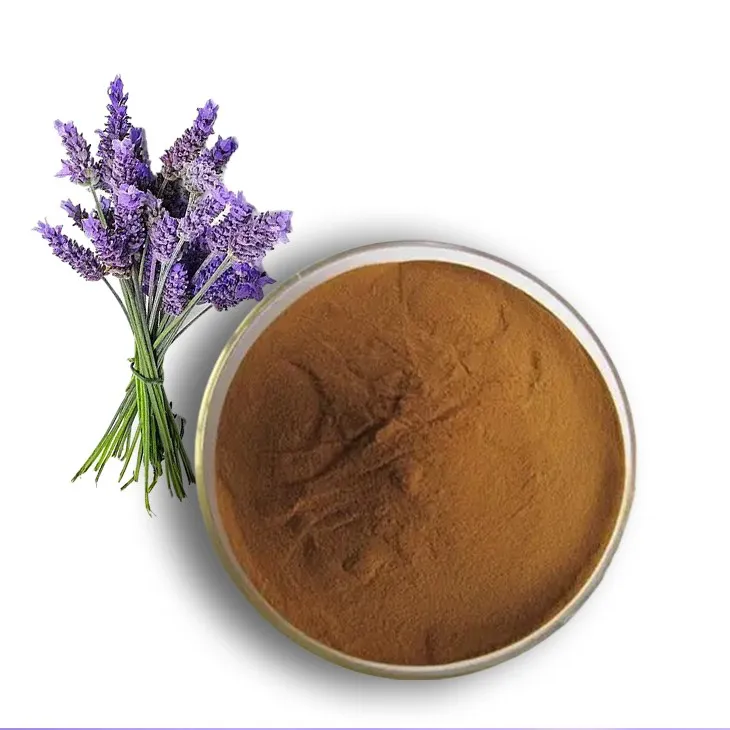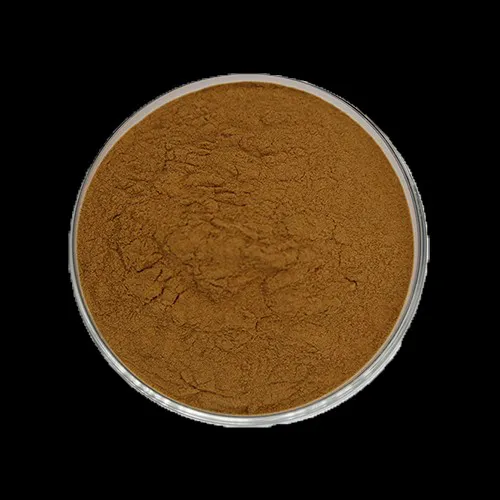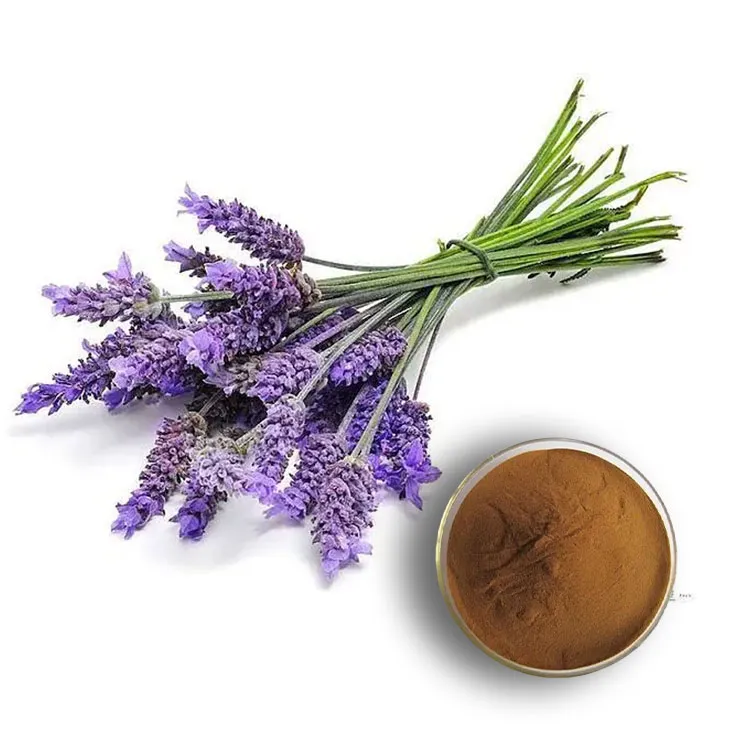- 0086-571-85302990
- sales@greenskybio.com
Lavender Extract: Uses, Advantages and Manufacturing Processes
2024-11-12

1. Introduction
Lavender is a well - known and beloved plant that has been used for centuries for various purposes. Lavender Extract, which is derived from this plant, is highly valued in many industries due to its unique properties. It contains a rich variety of bioactive compounds that contribute to its wide range of uses, numerous advantages, and distinct manufacturing processes.

2. Uses of Lavender Extract
2.1 Cosmetic Industry
Lavender Extract is commonly used in the cosmetic industry. It is added to many skin - care products such as lotions and creams. This is mainly because of its anti - inflammatory and antioxidant properties. These properties make it very effective in soothing the skin. For example, it can help with skin issues like acne and eczema. The anti - inflammatory nature of lavender extract can reduce redness and swelling associated with acne, while its antioxidant properties can help protect the skin from damage caused by free radicals, which is beneficial for eczema - prone skin as well.
2.2 Aromatherapy
In aromatherapy, lavender extract is a star ingredient. Its pleasant fragrance has a profound impact on the human mind and body. It can effectively relieve stress and anxiety. Many people use lavender - scented products or essential oils in diffusers to create a relaxing atmosphere at home or in the workplace. Moreover, it can also promote better sleep. A few drops of lavender extract on a pillow or in a warm bath before bedtime can help calm the nerves and improve the quality of sleep.
2.3 Medicinal Potential
Medicinally, lavender extract has been the subject of numerous studies. It has shown potential antibacterial and analgesic effects. The antibacterial properties of lavender extract may make it useful in treating minor skin infections or in preventing the growth of bacteria on the skin. Its analgesic effect, although not as strong as some pharmaceutical drugs, can still provide some relief from minor pain, such as headaches or muscle soreness when used in appropriate forms like diluted essential oils or topical creams.

3. Advantages of Lavender Extract
3.1 Natural Alternative
One of the major advantages of lavender extract is that it is a natural alternative to many synthetic chemicals. In today's market, there is a growing demand for natural products in various industries. In the cosmetic and personal care industries, for example, consumers are increasingly looking for products that are free from harsh chemicals. Lavender extract offers a natural solution. It can replace synthetic fragrances, preservatives, and some active ingredients in skin - care products, providing a more natural and potentially safer option for users.
3.2 Skin - Friendly
Lavender extract is gentle on the skin. It is suitable for different skin types, including sensitive skin. Unlike some synthetic ingredients that may cause irritation or allergic reactions, lavender extract has a soothing effect on the skin. This makes it a popular choice in skin - care formulations. It can be used in products designed for normal, dry, oily, or combination skin without causing adverse effects, as long as it is used in appropriate concentrations.
3.3 Environmental Benefits
The cultivation of lavender can also have positive impacts on local ecosystems. Lavender is a relatively low - maintenance plant that can thrive in certain climates. It can attract pollinators such as bees, which are essential for the health of the ecosystem. Additionally, lavender fields can act as a natural habitat for various insects and small animals. The cultivation of lavender can also contribute to soil conservation and prevent erosion in some areas.

4. Manufacturing Processes of Lavender Extract
4.1 Selection of Lavender Plants
The manufacturing process of lavender extract begins with the careful selection of high - quality lavender plants. The quality of the plants directly affects the quality of the extract. Growers need to choose the right variety of lavender depending on the intended use of the extract. For example, some varieties may be more suitable for essential oil extraction due to their higher oil content, while others may be better for other forms of extract. The plants should be healthy, free from diseases and pests, and harvested at the appropriate time. Usually, lavender is harvested when the flowers are in full bloom, as this is when the concentration of bioactive compounds is at its peak.
4.2 Steam Distillation
Steam distillation is one of the most common methods for extracting lavender extract. In this process, steam is passed through the lavender plant material. The steam helps to vaporize the essential oils and other active components present in the lavender. These vaporized substances then rise and are collected in a condenser, where they are cooled and converted back into liquid form. The advantage of steam distillation is that it is a relatively clean method. It helps to separate the essential oils and other active components from the plant material without leaving harmful residues. It also preserves the natural properties of the extract to a large extent. However, it requires specialized equipment and careful control of temperature and pressure to ensure optimal extraction.
4.3 Solvent Extraction
Another method used in the manufacturing of lavender extract is solvent extraction. In this process, a suitable solvent, such as ethanol or hexane, is used to dissolve the bioactive compounds from the lavender plant material. The plant material is soaked in the solvent for a certain period of time, during which the desired components are extracted into the solvent. After that, the solvent is removed, usually through evaporation, leaving behind the lavender extract. Solvent extraction can be more effective in extracting certain compounds that may not be easily obtained through steam distillation. However, it has the drawback of potentially leaving some solvent residues in the extract if not properly purified. Therefore, strict quality control measures are required to ensure the safety and purity of the final product.
5. Conclusion
Lavender extract is a versatile and valuable substance with a wide range of uses, numerous advantages, and specific manufacturing processes. Its applications in the cosmetic, aromatherapy, and medicinal fields make it an important ingredient. The advantages it offers as a natural alternative, its skin - friendly nature, and its environmental benefits further enhance its appeal. The manufacturing processes, such as steam distillation and solvent extraction, ensure that pure and effective lavender extract can be obtained for different applications. As research on lavender extract continues, it is likely that even more uses and benefits will be discovered in the future.
FAQ:
What are the main uses of lavender extract in the cosmetic industry?
Lavender extract is mainly used in skin - care products like lotions and creams in the cosmetic industry. Due to its anti - inflammatory and antioxidant properties, it can soothe the skin and is helpful for skin issues such as acne and eczema.
How does lavender extract work in aromatherapy?
In aromatherapy, lavender extract is a key ingredient. Its pleasant fragrance can relieve stress, anxiety, and promote better sleep.
What are the medicinal potential effects of lavender extract?
Medicinally, lavender extract has been studied for its potential antibacterial and analgesic effects.
Why is lavender extract considered a better choice compared to synthetic chemicals?
Lavender extract is a natural alternative to many synthetic chemicals. It is gentle on the skin, suitable for different skin types, and its cultivation can also have positive impacts on local ecosystems.
What are the common methods in the manufacturing process of lavender extract?
The manufacturing process of lavender extract typically involves several steps. First, high - quality lavender plants are carefully selected. Then, common extraction methods such as steam distillation or solvent extraction are used. Steam distillation is often used to separate the essential oils and other active components from the plant material without leaving harmful residues.
Related literature
- Lavender: A Review of its Traditional Uses, Chemical Composition, Pharmacological Activities, and Toxicology"
- "The Therapeutic Potential of Lavender (Lavandula angustifolia) in Skin Health and Disease"
- "Manufacturing and Quality Control of Lavender Extracts for Cosmetic Applications"
- ▶ Hesperidin
- ▶ Citrus Bioflavonoids
- ▶ Plant Extract
- ▶ lycopene
- ▶ Diosmin
- ▶ Grape seed extract
- ▶ Sea buckthorn Juice Powder
- ▶ Fruit Juice Powder
- ▶ Hops Extract
- ▶ Artichoke Extract
- ▶ Mushroom extract
- ▶ Astaxanthin
- ▶ Green Tea Extract
- ▶ Curcumin
- ▶ Horse Chestnut Extract
- ▶ Other Product
- ▶ Boswellia Serrata Extract
- ▶ Resveratrol
- ▶ Marigold Extract
- ▶ Grape Leaf Extract
- ▶ New Product
- ▶ Aminolevulinic acid
- ▶ Cranberry Extract
- ▶ Red Yeast Rice
- ▶ Red Wine Extract
-
Tongkat Ali Extract
2024-11-12
-
Phellodendron Extract
2024-11-12
-
Feverfew Extract
2024-11-12
-
Artichoke Leaf Extract
2024-11-12
-
Aguaje Extract
2024-11-12
-
Lotus leaf extract
2024-11-12
-
Sea buckthorn oil
2024-11-12
-
Green coffee bean Extract
2024-11-12
-
Coconut Water Powder
2024-11-12
-
Eyebright Extract
2024-11-12





















